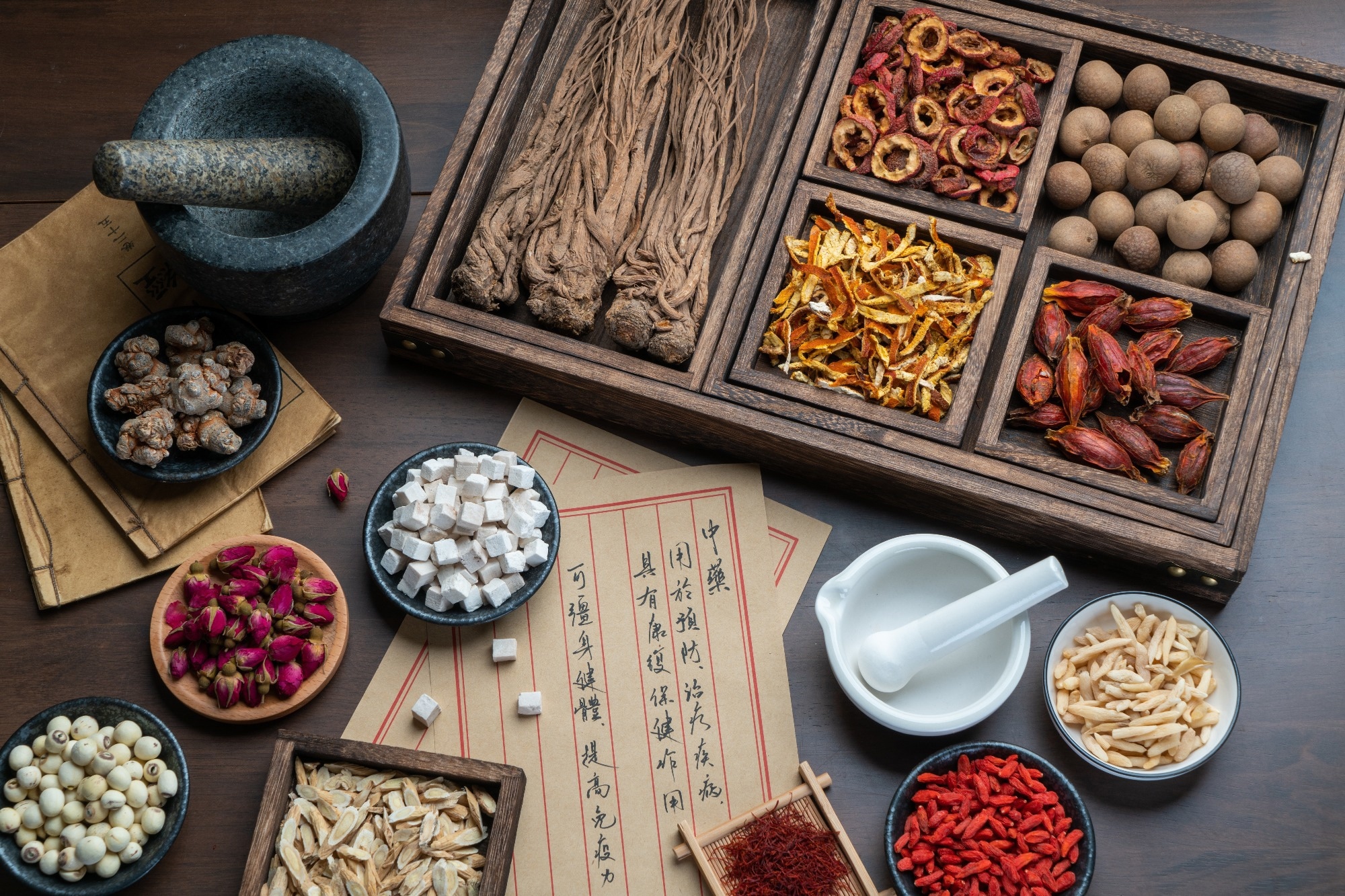In a recent review published in the Journal of Nanobiotechnology, researchers reviewed existing data on nanotechnology-based delivery of active components of traditional Chinese medicines (TCMs).
TCMs have been used for generations to treat disease; however, poor water solubility, limited bioavailability, and probable toxicity hamper their effective delivery. Liposomes, polymeric and inorganic nanoparticles, and organic/inorganic nanohybrids may improve TCM delivery to achieve better therapeutic results with fewer adverse effects than standard formulations.
In the present review, researchers describe the role of nanotechnology in TCM delivery, associated challenges, and future directions to accelerate their clinical transition.
 Review: Advanced application of nanotechnology in active constituents of Traditional Chinese Medicines. Image Credit: QinJin / Shutterstock
Review: Advanced application of nanotechnology in active constituents of Traditional Chinese Medicines. Image Credit: QinJin / Shutterstock
Role of nanoparticles in TCM drug delivery
Nanocarriers have emerged as a viable technique for improving the bioavailability and target action of TCMs, which have been utilized for millennia. These nanocarriers can improve TCM solubility and stability, increasing absorption and bioavailability. Lipid nanoparticles (LNPs) are suitable nanocarriers due to their compatibility with biofilms, ease of modification of other groups, and low toxicity.
Liposomes have high biocompatibility, minimal cytotoxicity, simple production techniques, chemical diversity, and easy pharmacokinetic property manipulation. They can alter medication pharmacokinetics and biodistribution, reduce toxicity, and improve therapeutic index. Solid lipid nanoparticles (SLNs) offer advantages such as better drug stability, higher bioavailability and tissue targeting, controlled medicine release, and superior pharmacokinetics. Nanostructured lipid carriers (NLCs) were created as second-generation lipid nanoparticles to solve the limitations of SLNs.
 Structural illustration of applications in nanodrugs of TCMs
Structural illustration of applications in nanodrugs of TCMs
Microemulsions (MEs) and nanoemulsions (NEs) are flexible drug delivery and biological platform materials. NEs are kinetically stable but thermodynamically unstable systems with tiny droplet sizes resistant to droplet aggregation, creaming, and gravity phase separation. The encapsulation of active medicines within MEs or NEs can result in the formation of nanocarriers, which have several advantages due to their larger specific surface area. Polymer hydrogel-based drug delivery systems have emerged as a viable technique for targeted and sustained TCM delivery due to their remarkable biocompatibility, customizable physicochemical characteristics, and ability to encapsulate hydrophilic and hydrophobic medicines.
Inorganic nanocarriers such as gold nanoparticles (Au NPs) and mesoporous silica nanoparticles (MSNs) have emerged as viable platforms for drug delivery due to their customizable size, large surface area, and surface charge. Organic and inorganic nanohybrids have benefits such as high stability, relative safety, and intelligent drug release in response to environmental cues. Prodrug-based nanocarriers provide several advantages for anticancer drug delivery, including increased drug availability, high loading efficiency, resistance to recrystallization, and controlled drug release. Self-assembled nanomedicines have shown anticancer efficacy and maintained the antitumor and hepatoprotective properties of ursolic acid, indicating novel paths for cancer therapy.
Challenges and Future Considerations
Liposomes, SLNs, and polymeric micelles (PMs) are potential TCM drug delivery methods; however, their clinical efficacy is restricted. Coupling SLNs with nanoparticle platforms such as polymeric and liposomes could boost performance. PMs have distinct qualities such as biocompatibility, inner drug protection, targeted medication delivery, and extended drug circulation duration. However, research is required to improve understanding of their assembly methods and in vivo fate.
Polymeric vesicles are an attractive platform for TCMs due to their excellent efficacy in encapsulating hydrophilic and hydrophobic medicines. Further research is required to fully comprehend the process and scale up the manufacture of homogenous polymeric vesicles for TCM delivery. Inorganic nanocarriers confront difficulties in ensuring in vivo biocompatibility and stability. Surface chemistry and functionalization techniques must be optimized for higher biocompatibility and decreased toxicity.
Nanomaterial delivery methods are being developed to address hurdles to TCMs, although single nanomaterials have limitations. Novel nano-level heterozygotes and organic/inorganic hybrid delivery methods may widen their biological uses. These systems could be used in cancer therapy due to their adaptability, usefulness, and lengthy in vivo circulation duration. However, research is still in its early phases and is fraught with difficulties. Improving the stability of nanostructures is critical for the clinical translation of carrier-free nanoformulations. Using nanocarriers in nanomedicine may increase toxicity, immunogenicity, and production costs.
Conclusions
Based on the review findings, nanocarrier-based delivery methods have shown promise in enhancing the therapeutic efficacy of TCMs, including advantages such as higher bioavailability, decreased toxicity, and greater effectiveness. However, the development of nanomedicine for TCM delivery is still in its early stages due to a limited scope of application, poor theoretical knowledge support, and incomplete fundamental research. TCM-based nanomedicines could achieve clinical applications with an increased emphasis on basic research, constant innovation in delivery methods and manufacturing technologies, and the fast development of supporting technologies such as artificial intelligence and single-cell sequencing.
Journal reference:
- Qiu, C., Zhang, J.Z., Wu, B., et al., Advanced application of nanotechnology in active constituents of Traditional Chinese Medicines. J Nanobiotechnol 21, 456 (2023), DOI: https://doi.org/10.1186/s12951-023-02165-x, https://jnanobiotechnology.biomedcentral.com/articles/10.1186/s12951-023-02165-x